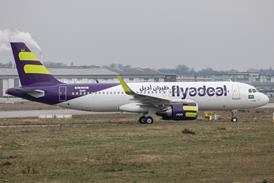PAUL LEWIS / WASHINGTON DC
Intelligence gathering is gaining importance in allied strategy over Afghanistan
The widening military campaign in Afghanistan is expected to lead to the combat debut of a number of new unmanned aerial vehicles (UAV) and weapon systems, with a growing emphasis on intelligence gathering, real-time targeting and the penetration of Taliban and al Qaeda underground hideouts.
The US Air Force has committed elements of its UAV fleet for operations over Afghanistan and this may include its small number of Northrop Grumman RQ-4AGlobal Hawk prototypes. While the high-altitude, long-endurance UAV is still under test, the USAF in the past has used development systems for combat missions, for example the Northrop Grumman E-8 Joint Surveillance Target Attack Radar System during the 1991 Gulf War.
"Global Hawk's huge endurance is more important than range and it could loiter all day and convey collected electro-optical data. People still have to get supplies and communicate. There will be repetitive patterns of behaviour and this is the first target Global Hawk would look for," says Loren Thompson, Lexington Institute chief executive officer.
There is strong evidence that the General Atomics RQ-1 Predator medium-altitude endurance UAV is in widespread use, along with the same company's Improved Gnat tactical UAV used by the US Central Intelligence Agency, which is believed to be equipped with the Lynx synthetic aperture radar. While Predator was previously used over Kosovo, there are reports that Afghanistan is the combat debut of the UAV armed with the laser-guided Lockheed Martin AGM-114 Hellfire air-to-surface missile.

The US military also has a number of new precision-guided weapons that are only now entering service, including the Northrop Grumman Brilliant Anti-Armour Submunition carried by the Block II version of the ground-launched Lockheed Martin MGM-140 Army Tactical Missile System. Another new anti-armour weapon available to the USAF and US Navy in the coming months is the BLU-108- armed AGM-154B version of the Raytheon Joint Stand-Off Weapon.
But Forecast International senior defence analyst Greg Fetter believes that as conventional Taliban ground forces are neutralised there will be a shift towards cave-busting missions requiring penetration weapons. The USAF has reportedly used for the first time the GPS-guided GBU-37, as well as the older laser-guided GBU-28, both used with the 2,270kg (5,000lb) BLU-113 penetrator bomb. Also available in smaller numbers is the new 450kg GBU-31 version of the Boeing JDAM GPS-guided bomb, while the 225kg GBU-30 is still in development. Boeing is also delivering initial SLAM-ERs and 50converted AGM-86D Conventional Air Launched Cruise Missiles equipped with the Lockheed Martin Advanced Unitary Penetrator warhead.
Source: Flight International























